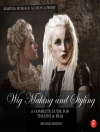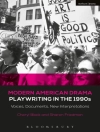In this insightful study of Hollywood cinema since 1969, film historian Nick Smedley traces the cultural and intellectual heritage of American films, showing how the more thoughtful recent cinema owes a profound debt to Hollywood’s traditions of liberalism, first articulated in the New Deal era. Although American cinema is not usually thought of as politically or socially engaged, Smedley demonstrates how Hollywood can be seen as one of the most value-laden of all national cinemas. Drawing on a long historical view of the persistent trends and themes in Hollywood cinema, Smedley illustrates how films from recent decades have continued to explore the balance between unbridled individualistic capitalism and a more socially engaged liberalism. He also brings out the persistence of pacifism in Hollywood’s consideration of American foreign policy in Vietnam and the Middle East. His third theme concerns the treatment of women in Hollywood films, and the belated acceptance by the film community of a wider role for the American post-feminist woman. Featuring important new interviews with four of Hollywood’s most influential directors – Michael Mann, Peter Weir, Paul Haggis and Tony Gilroy – The Roots of Modern Hollywood is an incisive account of where Hollywood is today and the path it has taken to get there.
Table des matières
Introduction
Chapter 1: The failure of American liberalism and the cinema of despair: Hollywood in the 1970s
Chapter 2: The disappointment of the liberal renaissance: Hollywood in the Clinton era, 1992–2000
Fantasy in the 1990s
Exemplar film one: Groundhog Day
Exemplar film two: The Truman Show
Author’s interview with Peter Weir
Introduction to the published screenplay of The Truman Show, by Peter Weir
Chapter 3: The rise and fall of the Republicans: Melancholy meditations on America’s destiny, 2000–2012
Film noir for the new millennium
Exemplar film three: Collateral
Author’s interview with Michael Mann
Exemplar film four: Michael Clayton
Author’s interview with Tony Gilroy
Chapter 4: The enduring appeal of pacifism: Hollywood and American global imperialism, 1978–2010
The pacifist tradition
Exemplar film five: In the Valley of Elah
Author’s interview with Paul Haggis
Chapter 5: The creeping advance of feminism: Hollywood and the changing role of women in America, 1970 to the present
The feminist debate
Two-faced woman – Julia Roberts as the incarnation of the American woman
Exemplar films six and seven: Pretty Woman and Erin Brockovich
Conclusion
A propos de l’auteur
Nick Smedley has a Ph.D. from London University on the history of Hollywood in the Golden Age, and has taught the master's course in film studies there.












